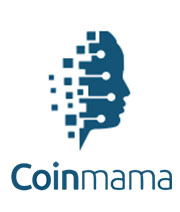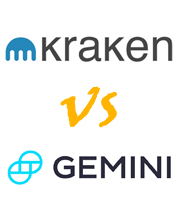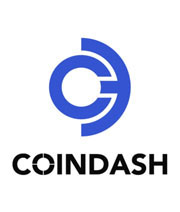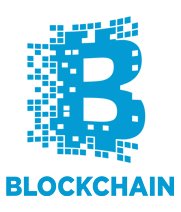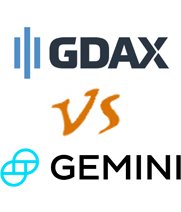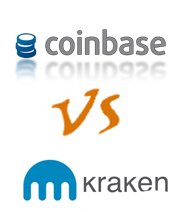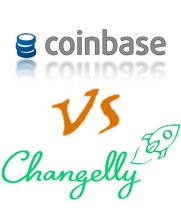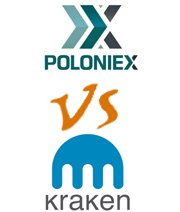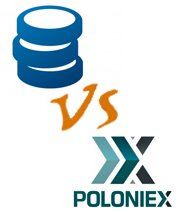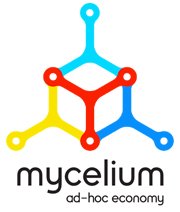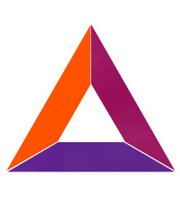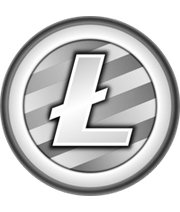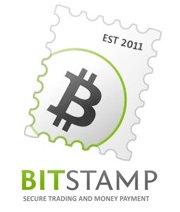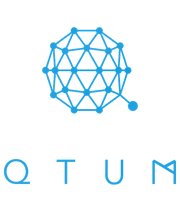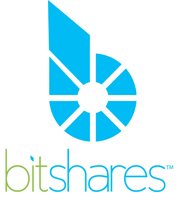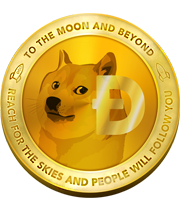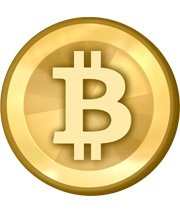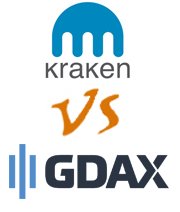
Table of Contents
Kraken and GDAX are two of the most prominent cryptocurrency exchanges that are currently operation. They both allow users to buy and sell a variety of different digital assets and offer a number of useful tools for tracking and recording data about those assets as well.
Both companies do a tremendous volume of trading per day and are among the most popular exchanges currently on the market. There are also some significant differences between the two platforms as well, and some users will find their needs better met by one than the other. This article examines both the similarities and the differences, as well as the strengths and weaknesses, of both Kraken and GDAX.
Comparing Kraken vs. GDAX
GDAX is the major product by crypto exchange giant Coinbase, who also offers a wallet and some other basic services. Coinbase is one of the most prominent names in the cryptocurrency industry and GDAX is one of the highest volume exchanges in the industry.
The only ways to fund a GDAX account are through direct bank account deposit or a deposit of one of the currencies that they trade in. Coinbase, however, has some more options for users, including credit or debit cards and fiat currency, and transfers from a Coinbase account into GDAX are free.
Kraken uses a more complicated system that groups their users into separate tiers based on the types of transactions and functions that they want to have access to. The lower tiers require less information from the user, while the upper tiers need more personal and financial data in order to use.
This is due to both legality and security concerns regarding both who the user is and where they are operating from. Different regions have different laws regarding cryptocurrency exchanges, and this is the way that Kraken uses to stay legal and safe.
Fundamentals of Kraken vs. GDAX
GDAX is known for having one of the most user-friendly interfaces of any exchange on the market. Their clean design is able to fit a significant amount of information onto the screen without making it feel cluttered or confusing. Controls are intuitive and simple to learn and grasp, making it one of the top platforms for first-time investors.
Kraken has more available ordering options than GDAX does, and as such their displays can sometimes feel more overwhelming. That said, users are able to use these features to perform tasks like setting stop losses, leverage options, and other more sophisticated trading techniques, which by their nature will require more extensive features.
Options offered by Kraken vs. GDAX
The primary function of both GDAX and Kraken is to be a forum where users can purchase and sell digital assets. They both also feature an array of tracking tools and analytics aids, however Kraken features a more extensive array of options for these purposes.
Kraken also offers more diverse options for users beyond simply buying and selling assets. They have options for margin lending, leverage trading, and other more advanced trades beyond those found on GDAX.
Both markets have flexible limits regarding the maximum daily purchasing and withdrawal amounts. GDAX raises their limits as users gain more credibility through successful transactions, age of account, and other factors.
Regardless of account status, however, it is never possible to withdraw more than 10,000 USD per day from GDAX, where Kraken allows their users to withdraw up to 25,000 USD. Both sites can take up to five days to approve deposits, and the method of deposit that customers use may be a factor in how quickly deposits become accessible.
Consumer Support
GDAX and Coinbase used to be regularly criticized for their poor level of customer service, however they have recently taken steps to improve this. They have added live, telephone-based customer support agents that can talk to users person-to-person, which is very rare in the cryptocurrency industry.
Both companies also use support tickets to handle technical issues, and they tend to average a similar 2-3 days per response. There are some complaints that can be found about Kraken ignoring users’ requests for support, however there is little official documentation of this online.
Kraken also includes a digital trading guide to help new users get started, and both companies have relatively thorough FAQ sections on their websites.
www.thescanfoundation.org/wp-content/languages/new/lipitor.html
The cryptocurrency industry has a reputation for providing very poor customer service overall, however both Kraken and GDAX are among the better reviewed companies overall.
Trust
These are two of the more trusted exchanges operating today. They both have millions of users that do billions of dollars’ worth of trading per day and are FDIC insured.
GDAX is backed by several notable investors, including the NYSE and Andreesen Horowitz. Kraken, a subsidiary of San Francisco-based Payward, Inc.
www.thescanfoundation.org/wp-content/languages/new/orlistat.html
, also has a number of trustworthy investors including Blockchain Capital, one of the largest blockchain-specific investors in the world.
There was an incident with GDAX in 2024 where one individual’s massive sell-off of Ethereum triggered a number of sales bots, who then also dumped their shares. The combined effect of all of these sales was that the global value of Ethereum briefly plummeted, which cost a number of their customers a significant amount of money.
While this was a scandal briefly, the price of Ethereum eventually returned to normal and GDAX reimbursed some of the customers that were most affected by the drop. This gesture bought GDAX some trust in the cryptocurrency community, many of whom were impressed by GDAX’s generosity and accountability.
Security
Both Kraken and GDAX have experienced some security issues recently, though they were very different in nature. GDAX was the target of a malicious hack, whereas Kraken has experienced some technical issues that have at times compromised their customers’ access to their funds.
The March 2024 attack on GDAX and their parent Coinbase was a two-pronged operation that both took coin and personal data from Coinbase’s users. The hackers were taking a small percentage of every transaction, resulting in an undisclosed amount of digital assets being appropriated from thousands of different users.
Coinbase has not disclosed the exact number of users that were affected, nor have they released any information about how much total value the theft had. It is also not known what measures Coinbase has taken to protect GDAX users, though their stated policy is that all accounts are FDIC insured and that all losses will be reimbursed.
Kraken’s incident happened in January of 2024 as the company was attempting to perform routine maintenance on their system. The system was scheduled to be down for at most, two hours, however due to some undisclosed issues – which may or may not have been malicious in nature – the system remained down for nearly two full days.
Kraken had been trading over 762 million USD worth of assets daily went completely dark, locking users out of their funds and offering very little information about what was happening. Ultimately the problem was resolved and it appears that no users lost any of their funds, however many were upset by money lost due to their inability to trade.
www.thescanfoundation.org/wp-content/languages/new/bactroban.html
Kraken has offered free trading and some other bonuses to their users as a way to make up for the error. It appears that any major damage to the company’s reputation has been avoided, however there are still quite a few complaints about the incident that can be found online.
Fees
Both Kraken and GDAX have variable fee structures that change based on the quantity and frequency of users’ purchases, whether they are a maker or taker, and other mitigating factors. It should be noted that GDAX has no maker fees associated with their platform at any level, whereas on Kraken maker fees tend to range between 0.0% and 0.16%.
Taker fees on GDAX generally range between 0.1% and .25%, while on Kraken the rates are usually between .10% and .26% Kraken’s maximum fee is lower than GDAX’s – 0.26% compared to .30%, which may be important to certain traders, particularly those specializing in Ethereum and Litecoin.
Offered Crypto
GDAX has a relatively limited selection of coins offered through their array. They carry only Bitcoin, Ethereum, and Litecoin and while there are constant rumors that they will be adding new currencies to their roster there are no concrete plans to do so at this juncture.
By comparison Kraken has a much wider selection of assets that they carry, though they still have fewer currencies than some of the larger exchanges in the market. In addition to the cryptos found on GDAX, Kraken offers Iconomi, Dash, EOS, Gnosis, Melon, Augur, Tether, Monero, and several other cryptos and tokens.
Summary
At first glance, and for some types of users, there may be very little difference between GDAX and Kraken. For other users, however, these small differences can also make a huge difference in their bottom line.
In general, GDAX is considered a better option for new users, whereas Kraken may be better suited to advanced traders that have more complicated needs and goals. Readers are encouraged especially to compare the different fee structures of the sites in order to determine which rates will be the most favorable for the type of trading that you plan on doing.



